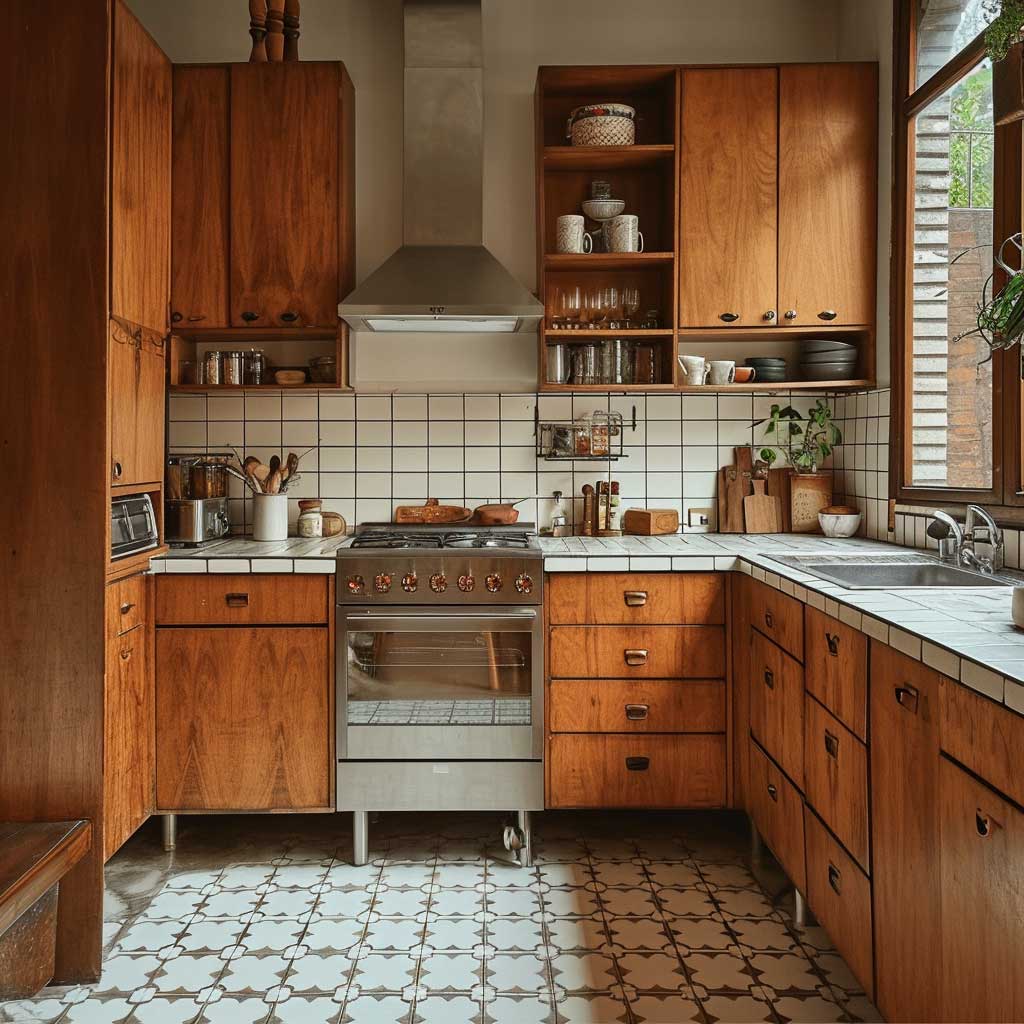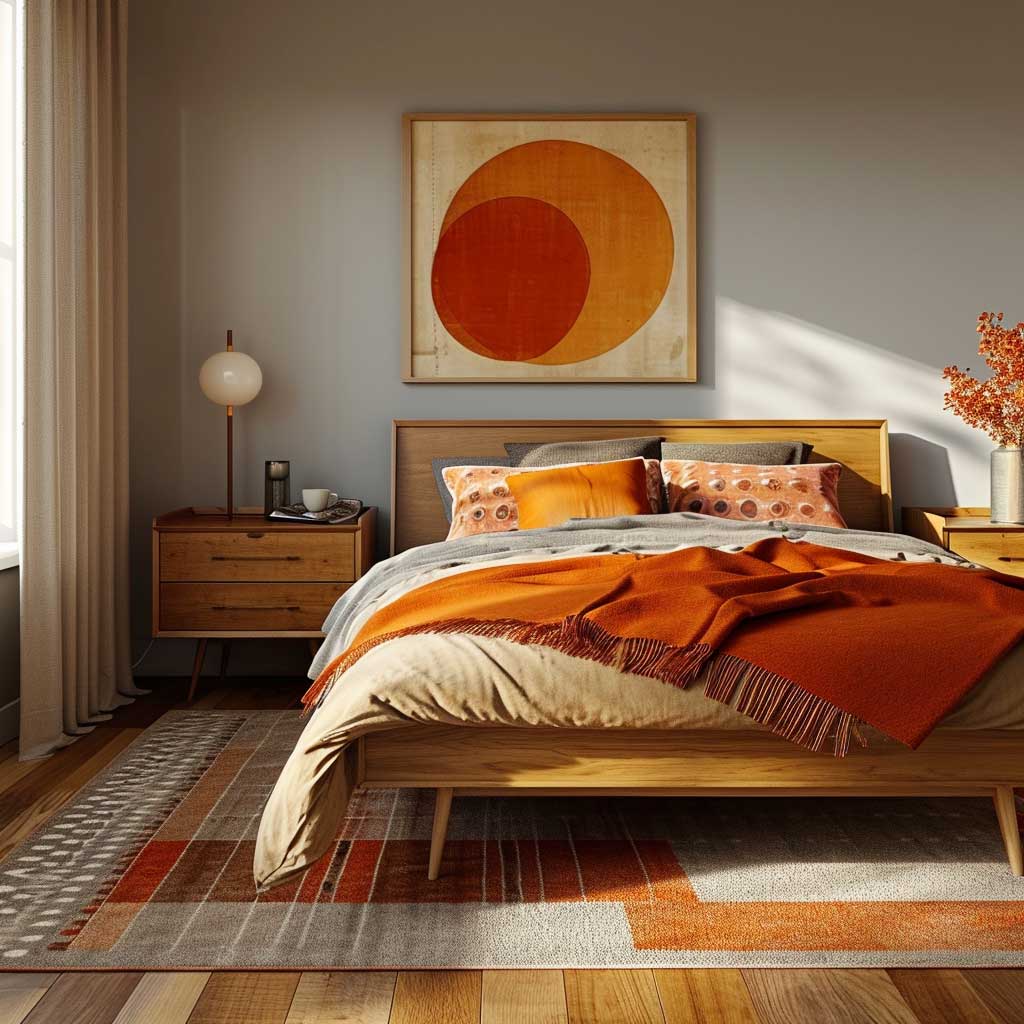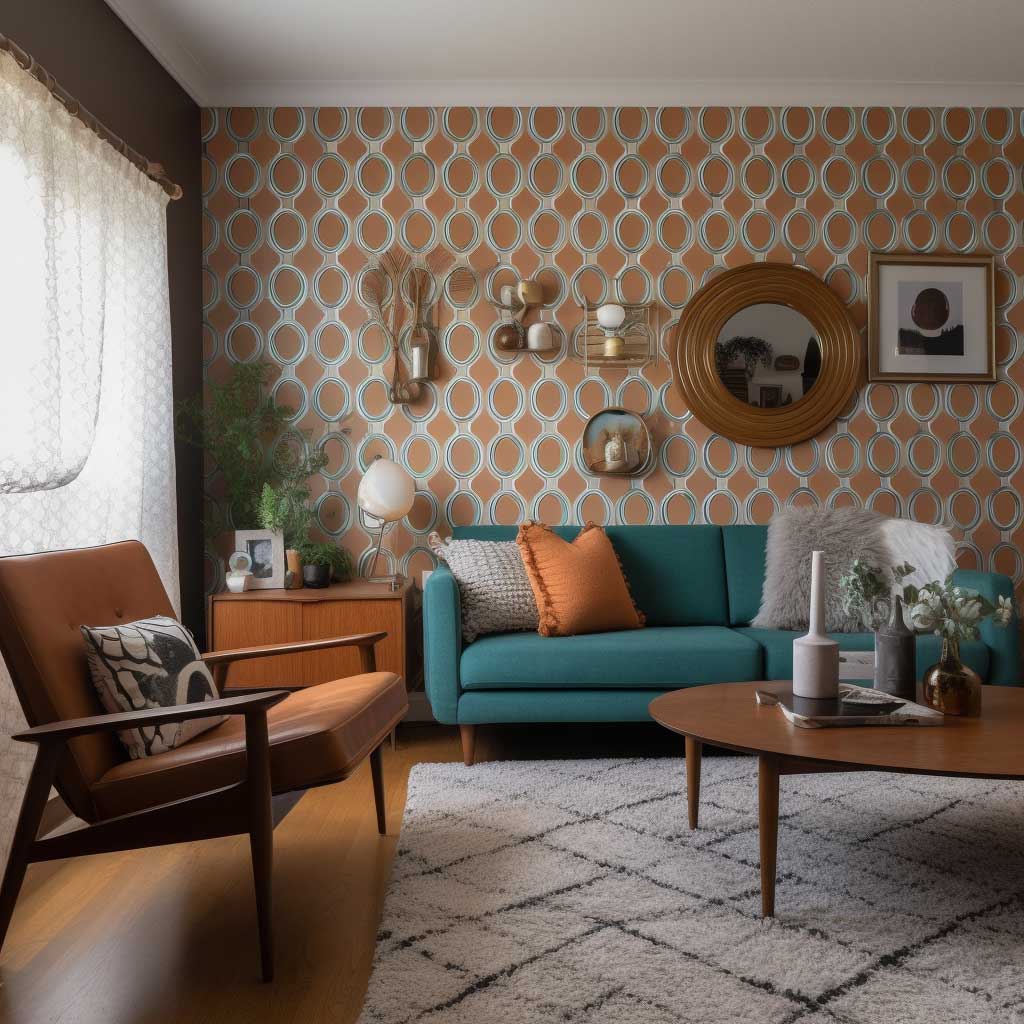The allure of retro Scandinavian interior design lies in its ability to seamlessly blend the simplicity and functionality of Scandinavian aesthetics with the charming and nostalgic elements of the past. This design style evokes a sense of nostalgia while maintaining a crisp, modern feel. It’s a celebration of time-honored design, brought to life with clean lines, functional beauty, and a palette that draws from the serene landscapes of the Nordic regions. Retro Scandinavian interior design invites warmth into minimalist spaces, creating environments that are both cozy and stylish, and perfect for contemporary living.
Classic Elegance in Retro Scandinavian Living Rooms




The Retro Scandinavian interior style is a harmonious blend of traditional Scandinavian design principles with nostalgic retro elements, creating living rooms that are both timeless and inviting. This style emphasizes the functionality and simplicity characteristic of Scandinavian design, while incorporating retro influences to add warmth and character. The result is a living space that feels both familiar and fresh, appealing to a diverse range of tastes.
In a retro Scandinavian living room, furniture plays a pivotal role. Mid-century modern pieces, known for their clean lines and functional design, are often the centerpiece. Sofas and armchairs with slender, tapered legs and understated upholstery not only provide comfort but also echo the minimalist aesthetic. The incorporation of vintage wooden pieces, perhaps a teak coffee table or a classic credenza, adds a touch of history and warmth. These pieces, often characterized by their simple yet elegant designs and fine craftsmanship, bridge the gap between past and present.
The color palette in these living rooms is typically understated, featuring a blend of neutral tones and soft pastels. This subtle approach to color keeps the space feeling open and light, true to Scandinavian design. However, the retro influence invites bolder accents – perhaps a mustard yellow cushion or a teal vase – adding pops of color that enliven the space without overwhelming it.




Lighting is another crucial element in retro Scandinavian living rooms. Fixtures from the mid-20th century, such as pendant lamps with geometric shapes or floor lamps with sleek, curved lines, not only provide functional lighting but also serve as statement pieces. The use of natural light is also maximized, with large windows and strategically placed mirrors helping to create a bright and airy atmosphere.
In these living rooms, decor is carefully curated to maintain a balance between minimalism and personality. Wall art, whether it’s abstract paintings or vintage posters, adds visual interest. Textiles like shag rugs or knit throws bring in texture and comfort. These elements, while nodding to the past, are chosen for their ability to complement the clean, modern feel of the room.
Vintage Charm in Modern Scandinavian Kitchens




Retro Scandinavian interior design brings a unique charm to modern kitchens, creating spaces that are both functional and stylish. This design style marries the efficiency and simplicity of Scandinavian design with retro accents, resulting in kitchens that are warm, welcoming, and full of character.
The cabinetry in these kitchens often features sleek, clean lines typical of Scandinavian design but is given a retro twist with the use of wood finishes or pastel colors. The simplicity of the cabinetry design allows for the incorporation of retro elements without cluttering the space. Details such as vintage-style handles or glass-fronted cabinets add a touch of nostalgia.
Countertops and backsplashes in a retro Scandinavian kitchen blend functionality with style. Materials like quartz or granite offer durability and a modern look, while backsplash tiles in retro patterns or colors add character and a sense of history. These elements work together to create a kitchen that is both practical and visually appealing.




Appliances in these kitchens often nod to the past while boasting modern technology. Retro-inspired refrigerators or stoves in classic colors like mint green or cherry red can serve as focal points, infusing the space with a playful yet sophisticated vibe. These appliances are complemented by contemporary fixtures, such as stainless steel sinks and minimalist faucets, ensuring the kitchen is equipped for modern living.
The use of open shelving or hanging pot racks adds a functional and decorative element to retro Scandinavian kitchens. These features not only provide convenient storage but also offer a way to display vintage kitchenware or cookbooks, adding a personal touch to the space.
Lighting is key in setting the mood in these kitchens. Pendant lights with a retro design, perhaps in brushed metal or bold colors, provide task lighting while contributing to the overall aesthetic. Under-cabinet lighting adds a modern touch, ensuring the workspace is well-lit and functional.
Cozy Nostalgia in Scandinavian Bedroom Retreats




Retro Scandinavian interior design creates bedrooms that are cozy sanctuaries, blending the serene simplicity of Scandinavian style with the warm nostalgia of retro elements. This unique combination results in spaces that are not only aesthetically pleasing but also deeply comforting, offering a peaceful retreat from the hustle and bustle of modern life.
The bed, as the focal point of any bedroom, often features a mid-century modern design in retro Scandinavian interiors. Clean lines and understated forms are key, with a focus on high-quality materials and craftsmanship. The addition of a vintage headboard, perhaps in a rich wood finish or upholstered in a retro fabric, adds a touch of historic charm and warmth to the space. Bedding in these bedrooms usually adheres to a minimalist aesthetic, often in neutral colors or soft pastels, but retro patterns like geometric shapes or bold stripes can add a playful touch.
Wall art and decor in a retro Scandinavian bedroom blend the old with the new. Vintage wall art, whether it’s classic posters, mid-century modern prints, or even retro-inspired abstract pieces, adds personality and color. This is complemented by more contemporary elements, like sleek wall-mounted lights or simple, modern shelving, maintaining a balance between retro charm and modern functionality.




Furniture beyond the bed is carefully chosen for its ability to harmonize with the retro Scandinavian theme. A vintage wooden dresser, a classic armchair in a corner, or a mid-century modern writing desk can serve both practical and aesthetic purposes. These pieces not only provide functionality but also contribute to the overall nostalgic feel of the room.
Textiles play an important role in adding comfort and texture. Cozy rugs, whether in a shag style to add a retro touch or in a more contemporary Scandinavian design, soften the room and add warmth underfoot. Cushions and throws in various textures and patterns can be layered to create a cozy, inviting bed or reading nook.
In conclusion, the retro Scandinavian interior design in bedrooms offers a perfect blend of comfort and style. It’s a design choice that not only makes a statement but also creates a serene and inviting atmosphere, ideal for relaxation and rest. The careful integration of mid-century modern furniture, vintage decor, and modern textiles results in a space that is both nostalgic and refreshingly contemporary.
Retro Scandinavian interior design offers a unique blend of the old and the new, creating spaces that feel both familiar and fresh. This design approach is about more than just aesthetics; it’s about creating a sense of home, a place where every element has a purpose, and where simplicity and elegance coexist. It’s a style that respects the past while embracing the functionality and minimalism of modern design, perfect for those who appreciate both the nostalgia of yesteryears and the clean lines of contemporary interiors.












